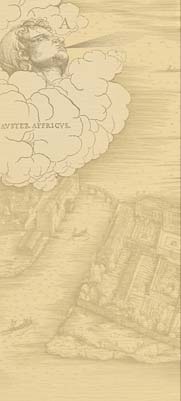Time Reckoning: Basic Time in the Middle Ages
During Michael's time, clocks were sometimes found in the local church tower, but rarely anywhere else. Nevertheless, Michael and his contemporaries needed to know the date and time. They were as immersed in time as we are—it was just a little different sense of time than we are used to.
Most people drew a basic awareness of time from celestial phenomena. In calculations, midnight was used as the beginning of the 24-hour day; in practical terms the day began at sunrise and its length varied with the seasons. The movement of the sun across the sky marked the hours. The appearance of different stars and constellations signified the advancing hours at night, while the phases of the moon indicated the passage of the month. Finally, the annual return of sunrise to the same place on the horizon heralded the end of one year and the beginning of the next.
The Julian calendar, established in 46 B.C.E. by Julius Caesar and used by everyone in medieval Europe, was superimposed onto these events. In Michael's day, March 1 was regarded as the start of the year in Venice, but other towns in Italy used other days to begin their year. There were 12 months with the same names and lengths as now—leap year was calculated as it is today. There were seven days of the week, also with their modern names; but Sunday, not Monday was considered the first day of the week, as it is today in Italy.
Religious events dominated the calendar year. Every day was dedicated to a different saint. Every week was punctuated by church attendance on the Sabbath. Every year saw a cycle of religious festivals celebrating the life of Christ. Christmas was commemorated, but Easter reigned as the pivotal annual event for all Christians.
Partly because celestial events continued to be observed and organized in terms of the zodiac, many people believed in some form of astrology. Celestial time and calendrical time were linked through the belief that heavenly bodies influenced life and events on Earth. Michael's mix of celestial, calendrical, and astrological material reflects his acceptance of this idea.
< Introduction | Time Tables >











